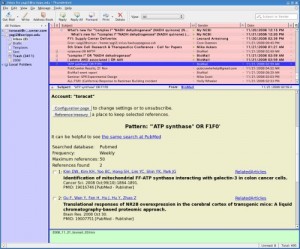CentOS Wiki is filled with information and is one of the most frequently used resources available to CentOS users. But, little known is its statistics page:
http://wiki.centos.org/PageHits
According to Ralph, this page is created through a macro called “PageHits” but not all the details as to how this works are known. Anyway, let’s take a look at some of the top entries as of Dec 05, 2008.
This page shows how often a page was requested since the beginning of
logging. It has no intelligence, every view counts as hit.
1. 732352 FrontPage
2. 268550 HowTos
3. 263042 Repositories
4. 217961 Repositories/RPMForge
5. 158478 TipsAndTricks
6. 136617 FAQ
7. 112780 HowTos/JavaOnCentOS
8. 105514 FAQ/CentOS5
9. 104275 HowTos/Xen/InstallingCentOSDomU
10. 102457 Repositories/CentOSPlus
11. 88726 Manuals/ReleaseNotes/CentOS5.1
12. 77033 Manuals/ReleaseNotes/CentOS5.0
13. 64338 PackageManagement/Yum
14. 64289 HowTos/Custom Kernel
15. 59413 HowTos/I need the Kernel Source
16. 58947 PackageManagement/Yum/Priorities
17. 57351 Manuals
18. 56419 Manuals/ReleaseNotes/CentOS5.2
19. 54229 HowTos/FreeNX
20. 49854 HowTos/PackageManagement/YumOnRHEL
21. 48016 FAQ/General
22. 42976 TipsAndTricks/NTFSPartitions
23. 42750 HowTos/Network/IPTables
24. 41817 TipsAndTricks/YumAndRPM
25. 41442 RecentChanges
26. 40885 HowTos/Nagios
27. 40669 GettingHelp
28. 40373 HowTos/Subversion
29. 37791 TipsAndTricks/WindowsShares
30. 30907 TipsAndTricks/Xen
32. 28906 TipsAndTricks/KickStart
33. 28127 FAQ/CentOS4
34. 27719 HowTos/MigrationGuide/ServerCD 4.4 to 5
35. 27660 Manuals/ReleaseNotes/CentOS5.1/Japanese
36. 26997 TipsAndTricks/VMWare Server
37. 26659 HardwareList
The kernel-related pages are also well visited despite the fact custome kernels are not supported by the CentOS team. Alan‘s efforts among others are well paid for. Ned‘s IPTables is quite popular, too. Note this page is relatively young compared to others.
My own small contributions, NTFS and WindowsShares, are listed there indiating a good number of CentOS users still stuck with the other OS.

